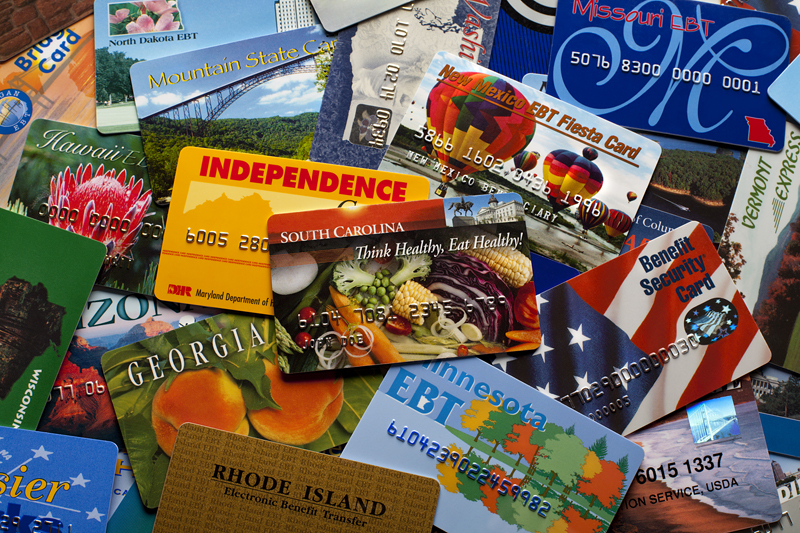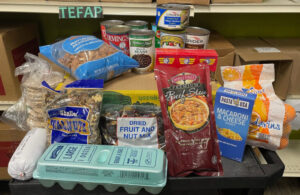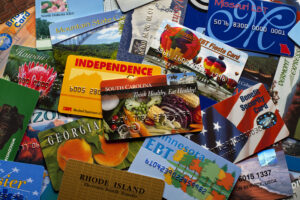As the nation’s most important mechanism for getting people food, SNAP provides access to about ten times the amount of food as all the nation’s food banks. Here are the ways SNAP has expanded during the pandemic, and how advocates would like to see its reach go even further:
Emergency EBT
For starters, the USDA is pumping $2 billion more a month into the benefits received by SNAP families, representing a 40% increase from the current $4.5 billion it already provides monthly. Households that do not already receive the maximum monthly benefit allowed are now eligible to get it, providing the average five-person household an additional $240 in purchasing power.
Advocates, however, point out that the increase is misleading because it leaves out 37% of SNAP recipients who already receive the maximum SNAP monthly benefit. “Nearly forty percent of families on SNAP will not see an increase in monthly payments because they are already receiving that maximum benefit,” said Julia McCarthy, Food Ed Hub Director at the Laurie M. Tisch Center for Food, Education & Policy. “The government is leaving the most needy out.”
As an entitlement, SNAP is designed to expand as more people need it. So the $60 billion or so currently allocated to SNAP should swell significantly as an estimated 17 million more people become food insecure. Unfortunately, many of the newly food-insecure are facing severe backlogs at state agencies when they apply for SNAP, despite accommodations intended to ease participation, like the elimination of in-person interviews.
Pandemic EBT
A brand new program authorized by the federal coronavirus aid package allows states to apply for Pandemic EBT (P-EBT), designed to be an efficient substitute for the meals children are missing due to school closures. The program delivers an average of $125 per month to households with kids who normally participate in the school lunch program, and is in addition to any grab-and-go meal plan that the school may already provide. It is available to families regardless of immigration status. “This is one of the reasons why P-EBT is so valuable, because it applies to all children that go to public schools, regardless of immigration status, background, or nationality,” said Joel Berg, CEO of Hunger Free America.
As of April 29, only 14 states had been approved to provide P-EBT, according to Food Research and Action Center. While states like Michigan requested reimbursement for the equivalent of breakfast and lunch ($5.80 per day, per child), New York (which has not yet been approved) has requested $7 per day, per child—the equivalent of the cost of breakfast, lunch, milk and after-school snacks. Another key difference for New York City is that it has qualified for Community Eligibility (CEP), or universal free lunch for all children in public school regardless of income, meaning all 1.1 million children enrolled in public school will be eligible for P-EBT.
Online Grocery Shopping with SNAP
Only eight states as of April 27 had been approved by the USDA to allow SNAP recipients to purchase groceries online so they can minimize their exposure to the coronavirus. On April 13, Democratic Minnesota Representative Ilhan Omar introduced a bill that would let SNAP recipients in all 50 states use their benefits to grocery-shop online.
Currently, SNAP recipients able to shop online can only do so at vendors such as Walmart, Shoprite and Amazon, but advocates hope to see that list expanded further to include not just more groceries and supermarkets, but also farmer’s markets, community supported agriculture programs, bodegas and restaurants. Advocates would also like to see minimum-order requirements and delivery fees eliminated for online SNAP ordering.
Disaster SNAP
The Disaster Supplemental Nutrition Assistance Program (D-SNAP) is generally associated with natural disasters, and is not getting much attention in the pandemic. It gives food assistance to low-income households who experience income loss or home or property damage in states declared to be disasters and allows hot-food purchases, on the assumption people are unable to prepare food at home. It also differs from the school-related P-EBT because it covers families without children, single people, and children under five.
While most disasters that have invoked this provision have been weather related, such as the wildfires in California, Hurricane Katrina, and Hurricane Sandy, the provision was put in place after the terrorist attacks of 9/11. Governor Roy Cooper of North Carolina is seeking authority to run D-SNAP, though to date, the President has not made such a declaration for any state.
What’s Next
Anti-hunger advocates, along with many Congressional democrats, continue to advocate to boost SNAP benefits even further in the next major economic response package. Proposals for that future bill include:
- Increase SNAP benefits by 15%, which would be a 20-cent increase from $1.34 per meal to $1.54 per meal;
- Raise the minimum monthly SNAP benefit from the current level of $16 a month to $30 a month;
- Suspend the Trump Administration’s administrative rules to limit SNAP eligibility;
- Let SNAP recipients use their EBT money for hot prepared food, not just cold;
- Increase money for food processing to reduce the amount of fruits and vegetables being plowed back into the field; and
- Increase in funding for vehicles and staff for home delivery of meals.
— Andrea Strong
Andrea Strong is a freelance journalist covering the intersection of food, business, law and policy for Heated and Food & Wine. She is also the founder of the NYC Healthy School Food Alliance. Follow her on Twitter @strongbuzz @nycschoolfood.









